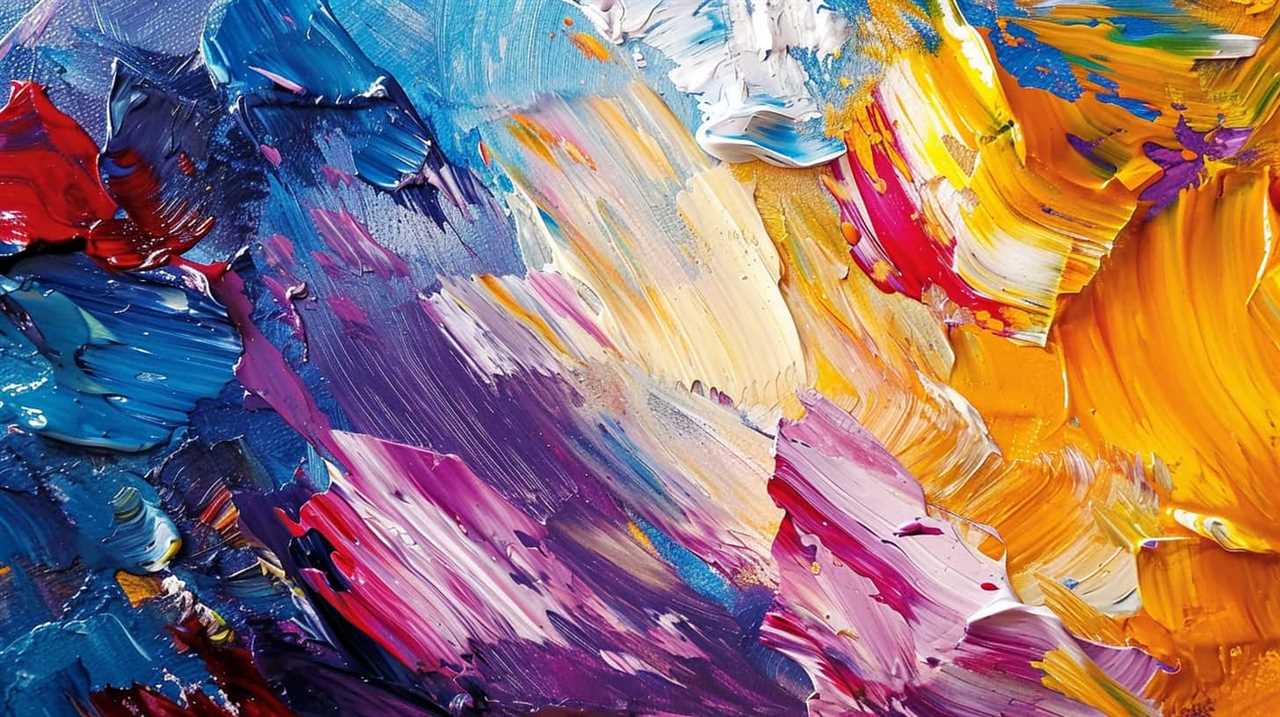Are you exhausted from the search for inspiration and unlocking your creative capabilities? Search no more! We’ve gathered a list of 8 motivational quotes about creativity from famous artists that will spark your creativity and assist you in achieving greater artistic success.
These masters of their craft, including Pablo Picasso, Salvador Dali, and Vincent Van Gogh, offer profound insights and unique perspectives on the power of creativity. Through their words, you will gain valuable wisdom on expressing your artistic vision, cultivating creativity, and embracing your creative potential.
So, get ready to be inspired as we delve into the minds of these extraordinary artists and unlock the secrets behind their creative genius.
Key Takeaways
- Picasso’s art style revolutionized the art world
- Dali’s surrealist techniques have had a profound influence on modern art
- Van Gogh’s paintings reflect his emotions and inner turmoil
- Kahlo channeled her experiences and emotions into her art
Pablo Picasso’s Insight on Creativity
Pablo Picasso’s unique perspective sheds light on the intricacies of creativity. His art style, characterized by bold colors, distorted forms, and fragmented compositions, revolutionized the art world and continues to influence modern art to this day. Picasso’s innovative approach challenged traditional notions of representation and pushed the boundaries of artistic expression.

One of the key elements of Picasso’s art style was his ability to deconstruct and reconstruct images. He believed that by breaking down familiar forms and rearranging them, he could reveal new perspectives and deeper meanings. This approach allowed him to explore the multiple dimensions of reality and capture the essence of his subjects in a way that was both dynamic and thought-provoking.
Picasso’s influence on modern art can’t be overstated. His groundbreaking techniques and unconventional subject matter inspired countless artists to push the boundaries of their own creativity. His ability to blend different artistic styles and experiment with various mediums opened up new possibilities for artists, encouraging them to explore their own unique visions.
Salvador Dali’s Unique Perspective on Imagination
We were captivated by Salvador Dali’s distinctive perspective on imagination. His surrealist techniques and unique artistic vision have had a profound influence on modern art. Dali believed that imagination was the key to unlocking the true potential of artistic expression. He saw the imagination as a powerful tool that could transport us to new and unexplored realms of creativity.
To evoke an emotional response in the audience, let’s take a moment to reflect on Dali’s words through a table:

| Column 1 | Column 2 | Column 3 |
|---|---|---|
| "Surrealism is | "Every morning, | "Give me two |
| destructive, | when I wake up, | hours a day of |
| but it destroys | I experience a | solitude, and I |
| only what it | supreme pleasure | will produce |
| considers to be | – the joy of | masterpieces." |
| shackles." | being Salvador |
Dali’s ability to push the boundaries of imagination and challenge conventional thinking has left an indelible mark on the art world. His unique perspective on imagination continues to inspire artists today, encouraging them to explore new ideas and embrace the power of their own creativity. Dali’s influence on modern art cannot be overstated, as he paved the way for artists to break free from traditional norms and embrace the limitless possibilities of the imagination.
Vincent Van Gogh’s Reflections on Artistic Inspiration
How does Vincent Van Gogh reflect on artistic inspiration?
Vincent Van Gogh, a renowned artist known for his vibrant and emotive paintings, offers profound insights into his artistic struggles and the role of emotions in creativity. Van Gogh’s artistic journey was fraught with hardship and turmoil, yet his ability to channel his emotions into his art is a testament to his unwavering dedication to his craft.
Throughout his life, Van Gogh faced numerous challenges that tested his resolve as an artist. He grappled with self-doubt, financial instability, and social isolation. Despite these obstacles, Van Gogh found solace in his art, using it as a means of self-expression and catharsis. His paintings, characterized by bold brushstrokes and vivid colors, are a reflection of his inner turmoil and raw emotions.
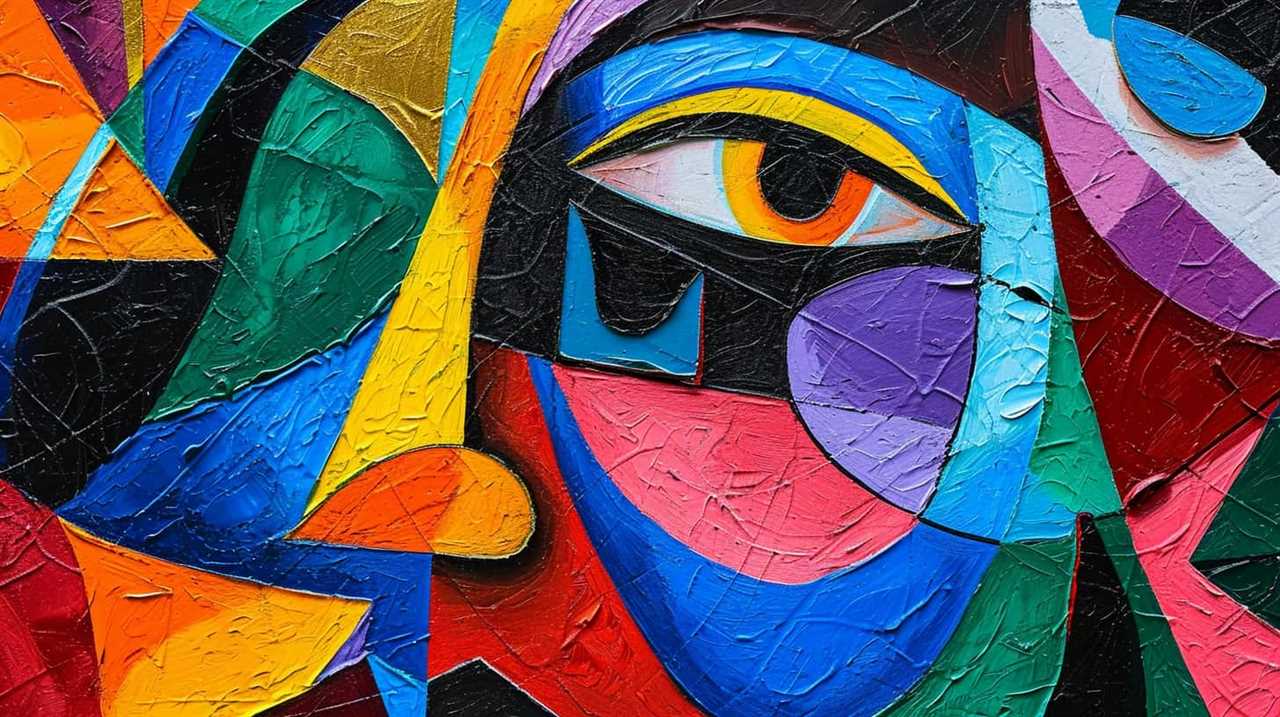
Van Gogh believed that emotions were the driving force behind artistic creation. He once said, ‘I am seeking. I’m striving. I’m in it with all my heart.’ For him, the act of creating art was a deeply personal and introspective process. He believed that by tapping into his emotions, he could convey the essence of his subjects and evoke a visceral response in the viewer.
Frida Kahlo’s Thoughts on Expressing Creativity
In reflecting on her artistic process, Frida Kahlo emphasized the importance of channeling her experiences and emotions into her creative expressions. Kahlo’s artistic style was deeply personal and introspective, often depicting her physical and emotional pain. She saw art as a way to explore and communicate her inner world, using vibrant colors and symbolic imagery to convey her thoughts and feelings.
Kahlo’s influence on modern art can’t be overstated. Her unique perspective and fearless approach to self-expression have inspired countless artists and continue to resonate with audiences today. By fearlessly sharing her personal experiences, Kahlo challenged societal norms and opened up conversations about identity, gender, and the human condition. Her work serves as a powerful reminder that art has the ability to transcend boundaries and provoke thought and emotion.
Kahlo’s legacy lives on in contemporary art, where artists continue to draw inspiration from her courage, honesty, and unwavering commitment to expressing the depths of the human experience.
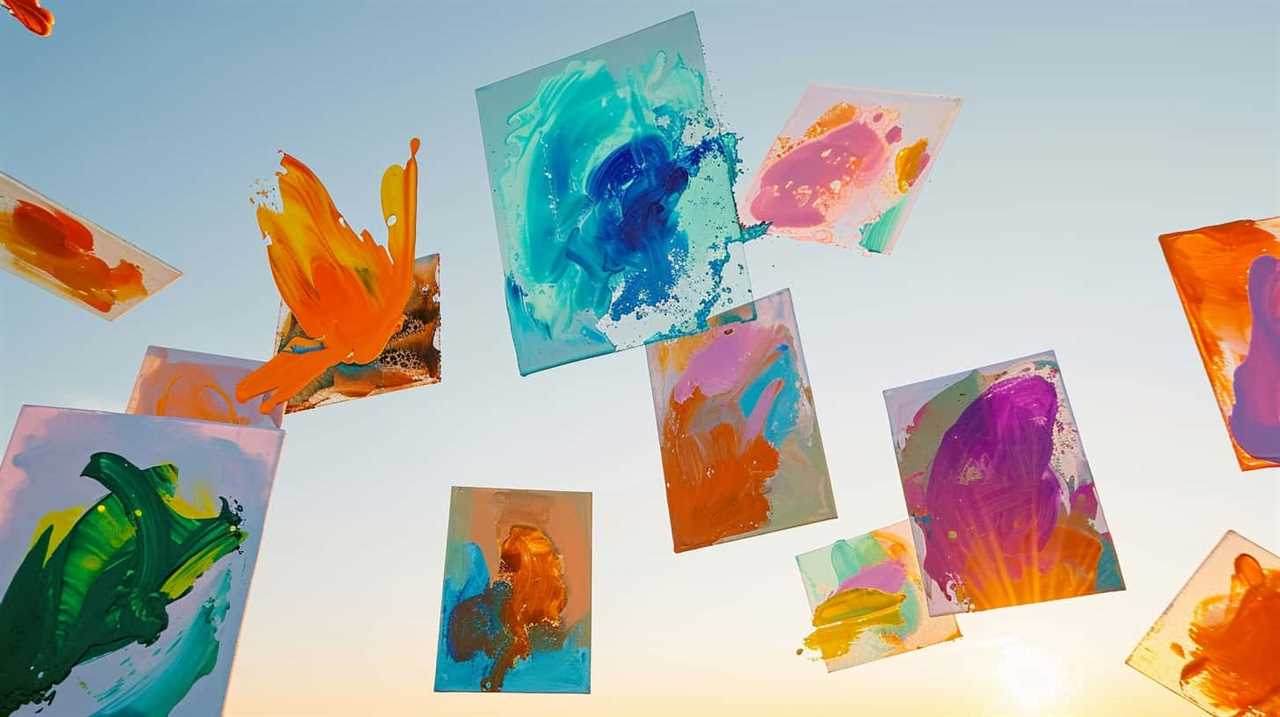
Georgia O’Keeffe’s Wisdom on Cultivating Creativity
When it comes to cultivating creativity, Georgia O’Keeffe’s artistic process provides valuable insights.
O’Keeffe emphasized the importance of embracing solitude as a means to tap into one’s creative potential.
By immersing herself in the tranquility of her surroundings, she found inspiration in the beauty of nature, which she then translated into her artwork.
O’Keeffe’s wisdom reminds us that creating space for introspection and connecting with our environment can foster a rich and vibrant creative mindset.

O’keeffe’s Artistic Process
In our exploration of renowned artists’ insights on creativity, we uncover Georgia O’Keeffe’s wisdom on cultivating creativity through her unique artistic process.
O’Keeffe’s artistic techniques, particularly her masterful use of color, played a pivotal role in her artwork. Her paintings often showcased vibrant hues and bold contrasts, capturing the essence of her subjects with remarkable precision.
By experimenting with different color combinations and shades, O’Keeffe was able to evoke powerful emotions and create a sense of depth and movement in her pieces. Her meticulous attention to color allowed her to convey the beauty and complexity of the natural world, while also expressing her own unique perspective.
Through O’Keeffe’s art, we learn the transformative power of color in the creative process, as it has the ability to inspire, captivate, and communicate on a deeply profound level.
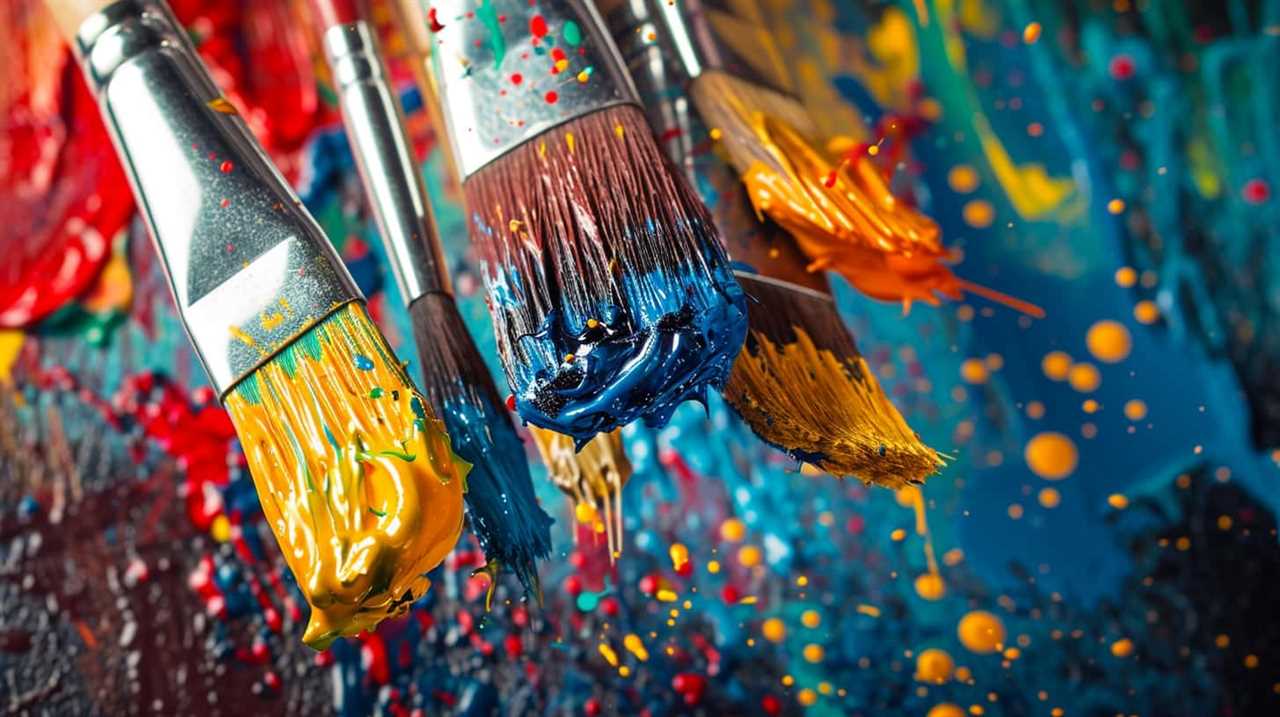
This emphasis on color is just one aspect of O’Keeffe’s artistic process, which we’ll further explore in the following sections, as we delve into the importance of embracing solitude for creativity.
Embracing Solitude for Creativity
Continuing our exploration of renowned artists’ insights on creativity, we now delve into the importance of embracing solitude for creativity, as highlighted by Georgia O’Keeffe’s wisdom on cultivating creativity. O’Keeffe, known for her iconic paintings of flowers and landscapes, understood the power of solitude in nurturing creative breakthroughs.
Here are four reasons why solitude benefits the creative process:
- Uninterrupted focus: Solitude allows artists to fully immerse themselves in their work without distractions, enabling deep concentration and exploration of ideas.
- Inner reflection: Solitude provides space for introspection, allowing artists to tap into their inner thoughts and emotions, leading to more authentic and meaningful artistic expressions.
- Freedom to experiment: Solitude grants artists the freedom to take risks and push boundaries, without the influence or judgment of others, leading to innovative and groundbreaking artwork.
- Connection with the self: Solitude fosters a deeper connection with one’s own thoughts, desires, and passions, paving the way for self-discovery and personal growth.
Finding Inspiration in Nature
Let’s explore how Georgia O’Keeffe’s wisdom on cultivating creativity can be found through finding inspiration in nature. O’Keeffe, a renowned artist known for her vibrant and abstract paintings of flowers and landscapes, believed in capturing the beauty of the natural world to fuel her creative process. She understood the power of connecting with nature and allowing it to inspire and guide her artistic vision. In her own words, she said, "I found I could say things with color and shapes that I couldn’t say any other way – things I had no words for." This profound insight highlights the transformative effect of immersing oneself in the natural world. To further illustrate the impact of nature on creativity, let’s consider the following table:
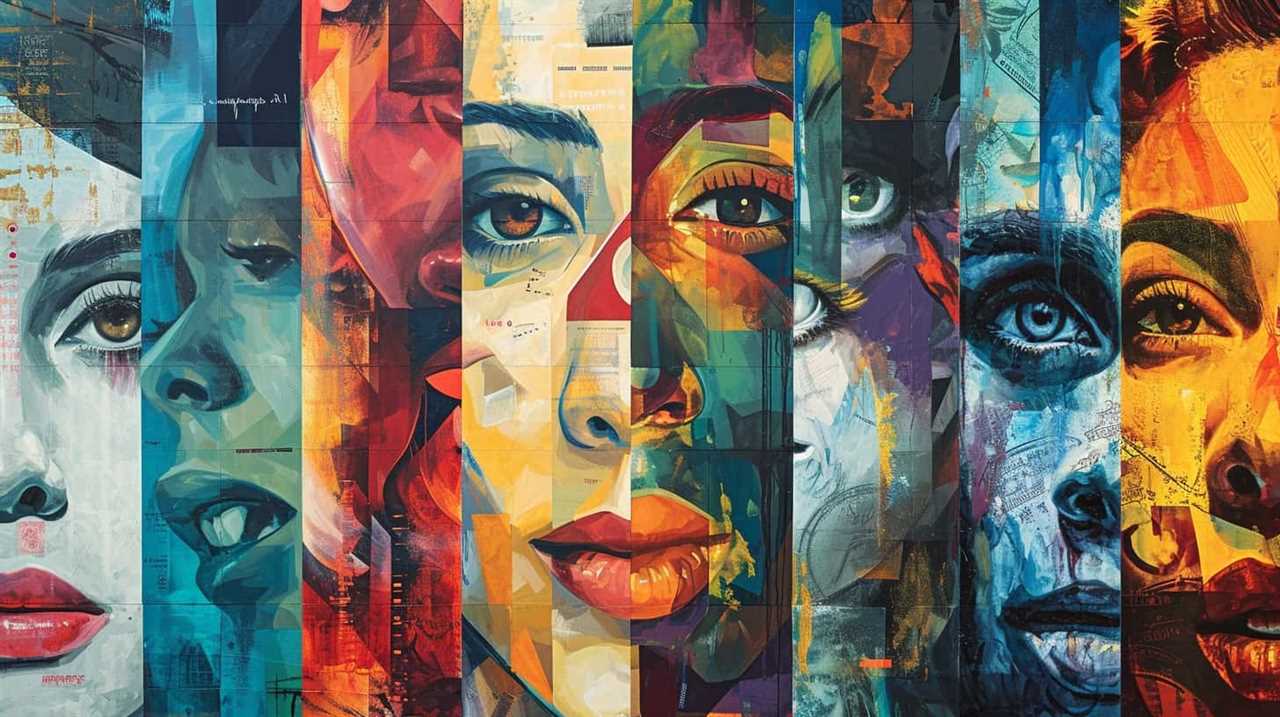
| Benefits of Finding Inspiration in Nature | Examples |
|---|---|
| Enhances observation skills | O’Keeffe’s detailed and precise depiction of flowers |
| Sparks imagination | O’Keeffe’s imaginative interpretations of landscapes |
| Evokes emotions | O’Keeffe’s use of color to convey mood and atmosphere |
| Promotes a sense of calm | O’Keeffe’s serene and peaceful desert paintings |
Leonardo Da Vinci’s Musings on the Power of Creativity
Da Vinci’s reflections shed light on the immense power of creativity. As one of the greatest artists in history, his impact on modern art can’t be underestimated. Here are four key insights from Da Vinci’s musings:
- The synthesis of art and science: Da Vinci believed that creativity thrived at the intersection of art and science. His meticulous observation of the natural world allowed him to create masterpieces that weren’t only aesthetically pleasing but also scientifically accurate.
- The power of imagination: Da Vinci understood that imagination was the fuel that ignited creativity. His ability to envision and bring to life fantastical ideas, such as his flying machines and underwater exploration, paved the way for future generations of artists to push the boundaries of what was possible.
- Embracing experimentation: Da Vinci was a relentless experimenter, constantly exploring new techniques and materials. His willingness to take risks and step outside of traditional artistic norms inspired artists to challenge conventions and embrace innovation.
- Embodying the Renaissance spirit: Da Vinci’s insatiable curiosity and multidisciplinary approach epitomized the spirit of the Renaissance. His influence on modern art can be seen in the works of Salvador Dali, who embraced surrealism and pushed the boundaries of reality.
Da Vinci’s musings on the power of creativity continue to inspire artists today.
Now, let’s delve into Claude Monet’s observations on capturing inspiration.
Claude Monet’s Observations on Capturing Inspiration
Building upon Da Vinci’s insights, we explore Claude Monet’s keen observations on capturing inspiration. As one of the pioneers of Impressionism, Monet developed unique artistic techniques that revolutionized the art world. His influence on Impressionism and his ability to capture the essence of a scene with vibrant brushstrokes and vivid colors continue to inspire artists today.

Monet believed that inspiration could be found in the everyday world around us. He was known for his plein air painting, where he’d go outside and paint directly from nature. By immersing himself in his surroundings, Monet was able to capture the fleeting moments of light and atmosphere that define his work. He once said, ‘Color is my day-long obsession, joy, and torment.’
Monet’s artistic techniques, such as his use of loose brushstrokes and his emphasis on capturing the changing effects of light, were instrumental in the development of Impressionism. His ability to convey the atmosphere and mood of a scene through his use of color and texture inspired a new generation of artists.
As we transition into Andy Warhol’s advice on embracing creative potential, we can draw upon Monet’s observations to remind ourselves of the importance of finding inspiration in the world around us and capturing it in our own unique way.
How Can Resilience Quotes from Artists Inspire Creativity?
Many of the best artist resilience quotes offer insight and inspiration for overcoming creative challenges. Renowned artists have shared powerful words about resilience, serving as a source of encouragement for aspiring creators. These quotes can ignite the spark of creativity and provide strength during artistic struggles.
Andy Warhol’s Advice on Embracing Creative Potential
Continuing the exploration of renowned artists’ insights on creativity, we now delve into Andy Warhol’s advice on embracing our creative potential.
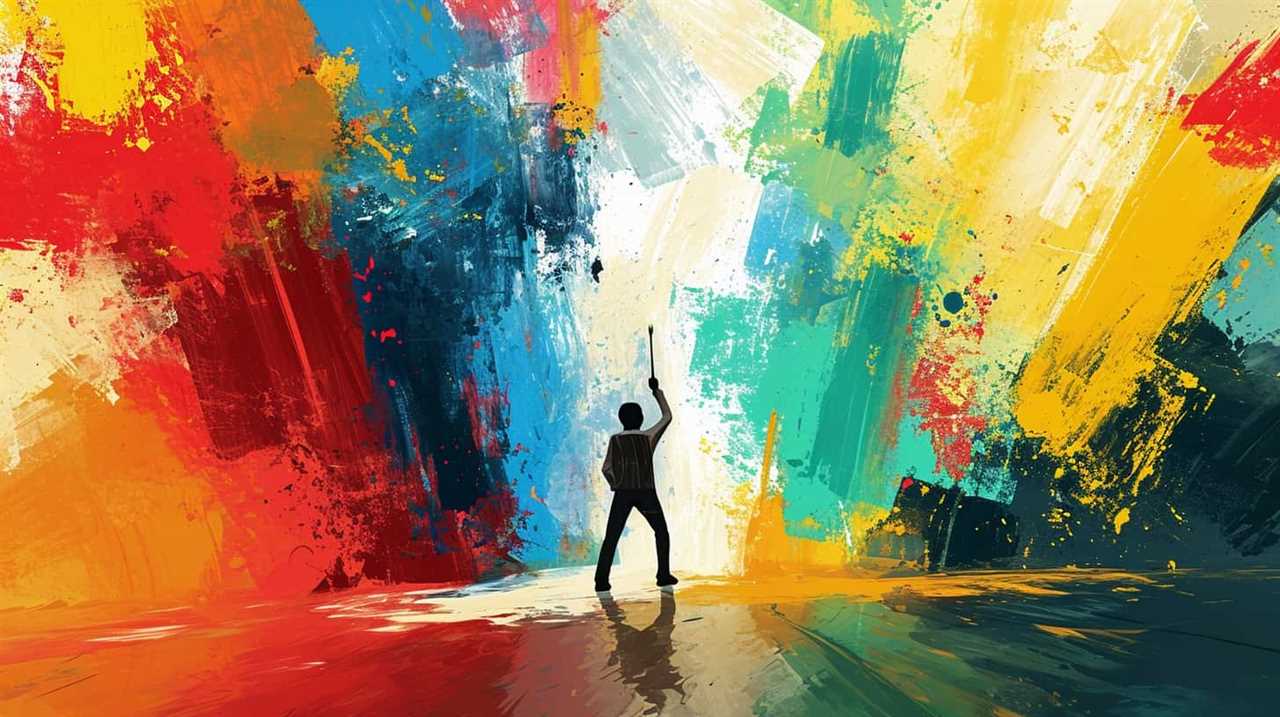
Warhol, known for his iconic pop art, had a unique perspective on creativity and individuality. Here are four key insights from Warhol that can help us unlock our creative potential:
- Embrace your individuality: Warhol believed that everyone has a unique perspective to offer. He encouraged individuals to embrace their own quirks and idiosyncrasies, as these are what make us truly original. By celebrating our individuality, we can tap into a wellspring of creative ideas.
- Don’t be afraid to take risks: Warhol understood the importance of pushing boundaries and taking risks in art. He believed that creativity thrives when we step outside of our comfort zones and challenge conventional norms. By embracing the unknown and being willing to fail, we open ourselves up to new possibilities.
- Experiment with different mediums: Warhol was a master of experimentation, constantly exploring new techniques and mediums. He believed that creativity flourishes when we step outside of our usual routines and try something different. By experimenting with different mediums, we can expand our artistic horizons and break through creative blocks.
- Embrace mistakes as opportunities: Warhol saw mistakes as valuable learning experiences. He believed that embracing mistakes allows us to grow and discover new paths in our creative journey. By reframing mistakes as opportunities, we can overcome creative blocks and unlock our full creative potential.
Incorporating Warhol’s advice into our creative practice can help us embrace our individuality, overcome creative blocks, and unleash our full creative potential. Let’s remember his words and strive for artistic mastery.
Frequently Asked Questions
How Did Pablo Picasso Develop His Unique Artistic Style?
Pablo Picasso developed his unique artistic style through a combination of influences on modern art and his innovative use of color. His work revolutionized the art world and continues to inspire artists today.
What Was Salvador Dali’s Favorite Medium to Work With?
Salvador Dali’s favorite medium to work with was oil paint. This medium allowed him to create intricate and detailed artwork, showcasing his unique artistic style. Oil paint remains a popular choice for contemporary artists due to its versatility and durability.

How Did Vincent Van Gogh Find Inspiration for His Famous Paintings?
Vincent van Gogh’s mental state greatly influenced his artistic process. His struggles and emotions fueled his creativity, giving his paintings a raw and intense quality. Nature played a significant role in inspiring him, providing him with solace and subject matter for many of his famous works.
What Techniques Did Frida Kahlo Use to Express Her Creativity?
Frida Kahlo’s creative techniques included the use of symbolism and self portraiture. These methods allowed her to express her inner emotions and personal experiences through her art. She used symbolism to convey deeper meanings and self portraiture to explore her own identity.
How Did Georgia O’keeffe Overcome Creative Blocks in Her Artistic Process?
In Georgia O’Keeffe’s artistic journey, she overcame creative blocks by immersing herself in nature and finding inspiration in the smallest details. By observing and exploring, she unlocked the potential of her creativity.
Conclusion
In exploring the inspiring quotes on creativity from renowned artists, we’re reminded of the limitless potential that lies within each of us.

While some may argue that creativity is a talent reserved for a select few, these artists reveal that it’s a universal human trait waiting to be unleashed.
By embracing our own creative potential, we can paint a vivid and vibrant picture of our lives, one that reflects our unique perspectives and leaves a lasting impact on the world.
Lauren’s talent in writing is matched by her passion for storytelling. Her love for books and deep understanding of culture and entertainment add a distinct flavor to her work. As our media and press contact, Lauren skillfully bridges the gap between afterQuotes and the broader media landscape, bringing our message to a wider audience.



